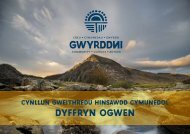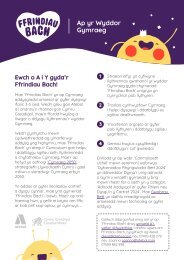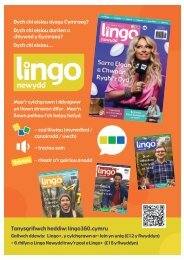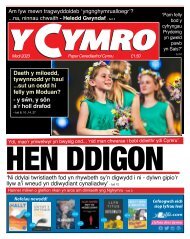Create successful ePaper yourself
Turn your PDF publications into a flip-book with our unique Google optimized e-Paper software.
The Romani Holocaust<br />
O Baró Porrajmos<br />
<strong>Lesson</strong> <strong>Plan</strong><br />
Topic/Time/Duration<br />
Topic: The Holocaust<br />
2 Periods<br />
1.5 hours<br />
25 pupils – Year 3/4<br />
Structure & sequence<br />
Time/Teacher activity/<br />
Pupil activity<br />
9:30/teacher introduction/<br />
pupils listening<br />
9:40/teacher introduces<br />
timeline/pupils Q&A<br />
9:55/teacher shows maps/<br />
pupils study maps in pairs<br />
10:05/teacher identifies key<br />
terms and definitions/<br />
pupils Q&A<br />
10:20/teacher uses HMDT<br />
learning resource material on<br />
Roma & Sinti in Germany/<br />
pupils study material in small<br />
groups<br />
10:40/teacher introduces<br />
key texts from JGLS to look at<br />
testimony from Roma & Sinti/<br />
pupils read texts and discuss<br />
11:00/finish<br />
Self-evaluation<br />
What was successful?<br />
What was less successful?<br />
Where is there room for<br />
improvement?<br />
Aims & outcomes<br />
The aim of this lesson is to introduce the pupils/students to the topic of the Romani<br />
Holocaust, its causes, the significant events and sites associated with the events,<br />
the sequence of those events, terminology, and the groups involved. By the end<br />
of the lesson, the pupils/students will have developed a better understanding of<br />
the event, the groups involved, its historical, social, and geographical contexts, and<br />
learned some clear, coherent, and reliable data regarding the event, i.e., numbers of<br />
Sinti, Roma, and other Gypsy groups that perished at the hands of the Nazis, 1936<br />
to 1945.<br />
Materials & equipment<br />
The HMDT Romani Holocaust, O Baró Porrajmos Learning Resource pack,<br />
Large maps of the European continent, with state borders, c.1933<br />
Maps of Nazi Germany’s aggressive European expansion, 1936 to 1942<br />
Access to the Internet to carry out learner directed research<br />
— Key texts, Journal of the Gypsy Lore Society, vol.25/26, Parts 1-4, January to<br />
October 1946: Vanya Kochanowski; Matéo Maximoff; Frédéric Max<br />
— Council of Europe’s Romani history factsheets – the Romani Holocaust<br />
— Pens, paper, markers, highlighters<br />
— Laptops, tablets, desktop computers with Internet access<br />
(Computer Assisted Learning)<br />
— Computer Mediated Tutoring (CMT) video-conferencing software for<br />
distance-learning/at-home learning – such as Zoom, Teams, Skype,<br />
FaceTime, etc.<br />
Previous knowledge assumed<br />
The pupils/students may have some previous general knowledge regarding the<br />
topic of the Holocaust, from commemoration events, news, television and media<br />
documentaries.<br />
Pupils/students may also have some knowledge of the topic from controversial<br />
statements and remarks that have drawn attention in the media and press, made by<br />
politicians, entertainers, and public figures, over the past few years.<br />
The pupils may have some understanding that the Holocaust was not just an event<br />
that impacted upon Europe’s Jewish people, 1936 to 1945, but that included Sinti<br />
and Roma (Gypsies).
The Romani Holocaust<br />
O Baró Porrajmos<br />
<strong>Lesson</strong> <strong>Plan</strong><br />
However, many pupils/students may have little knowledge of the actual details of<br />
the Romani Holocaust, and some may have no knowledge of the context, causes,<br />
events, timeline, or impacts and may have little detailed understanding of the<br />
importance of this topic in the wider context of Holocaust Studies.<br />
Brief summary of content<br />
The lesson will begin with an overview of the topic, an introduction to the Romani<br />
Holocaust in its context of the wider Holocaust, a look at a timeline of the Romani<br />
Holocaust, its causes, impacts, and outcomes. A particular discussion around why the<br />
topic has been so often ignored or ‘forgotten’ will also be part of the contextualisation.<br />
The details of the events and their occurrences will be undertaken, with pupils/<br />
students carrying out Internet searches to bring their own learning to the lesson.<br />
Finally, the lesson will conclude with a Q&A around the topic as it has been discussed,<br />
as part of the assessment of pupil learning, before assigning the ‘take-home’ task of<br />
comparing the three personal testimonies from survivors, and excerpts from other<br />
sources (that learners can self-select) in the learning resource Bibliography, i.e., Ceja<br />
Stojka, Walter Winter, Sofia Taikon.<br />
Assessment of pupil/student learning<br />
Assessment of pupils/student learning will be through a teacher/pupil generated<br />
rubric, Q&A session towards the close of the lesson, and a take-home assignment<br />
based upon the key texts/testimonies from survivors.<br />
Distance learning assessment will follow the same process, with submission of the<br />
‘take-home’ assignment through email/or file-sharing facility of the CMT software,<br />
by a specified deadline.

















